C.A.S.T. Research projects
Non-Funicular Masonry
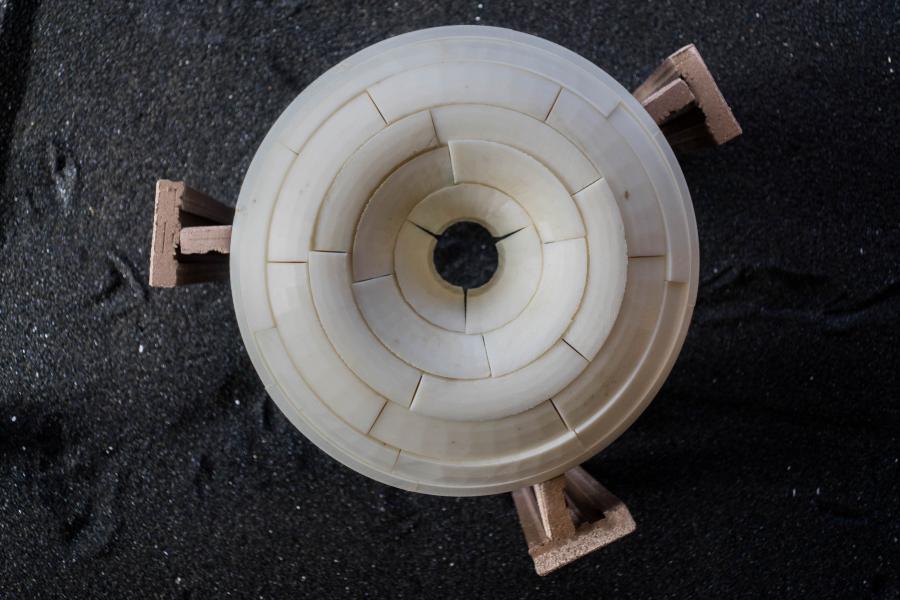
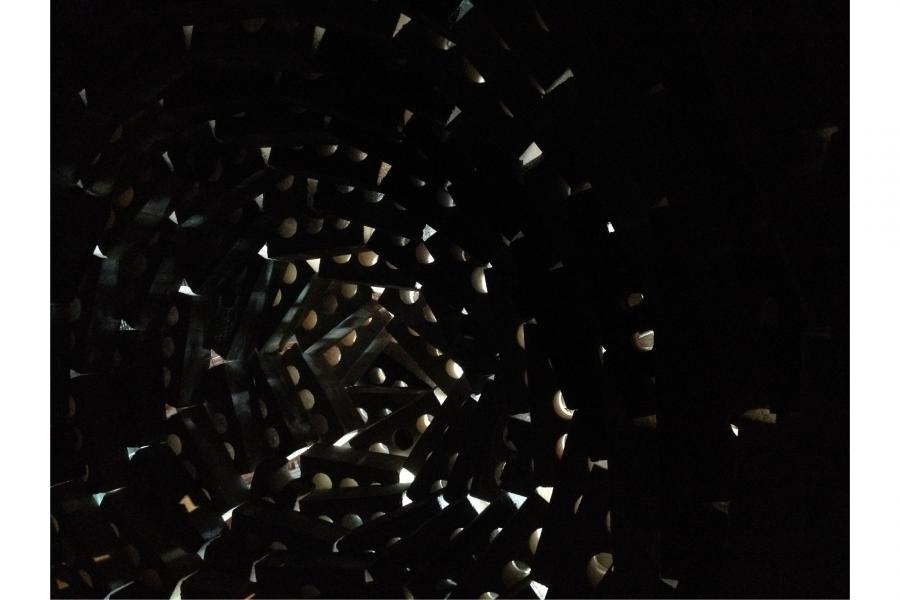
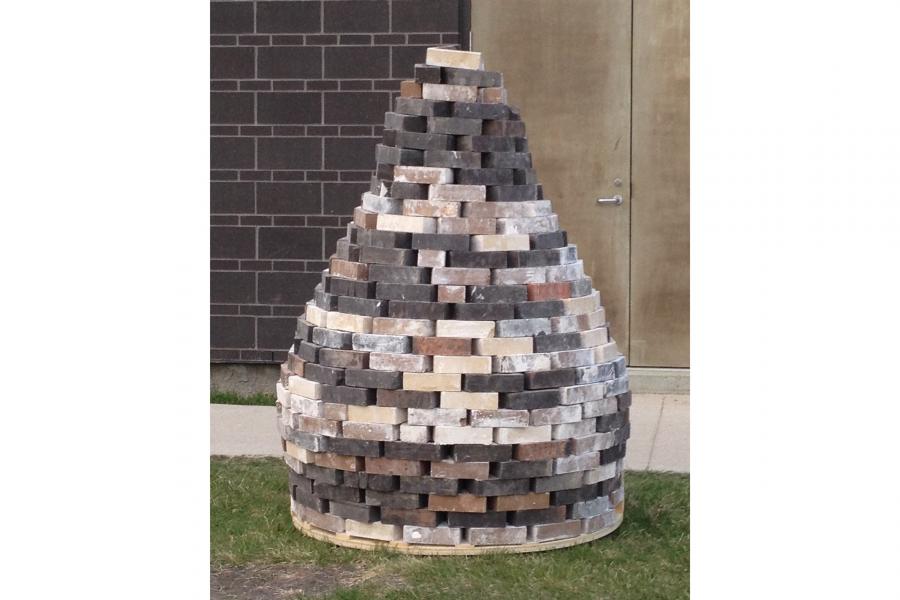
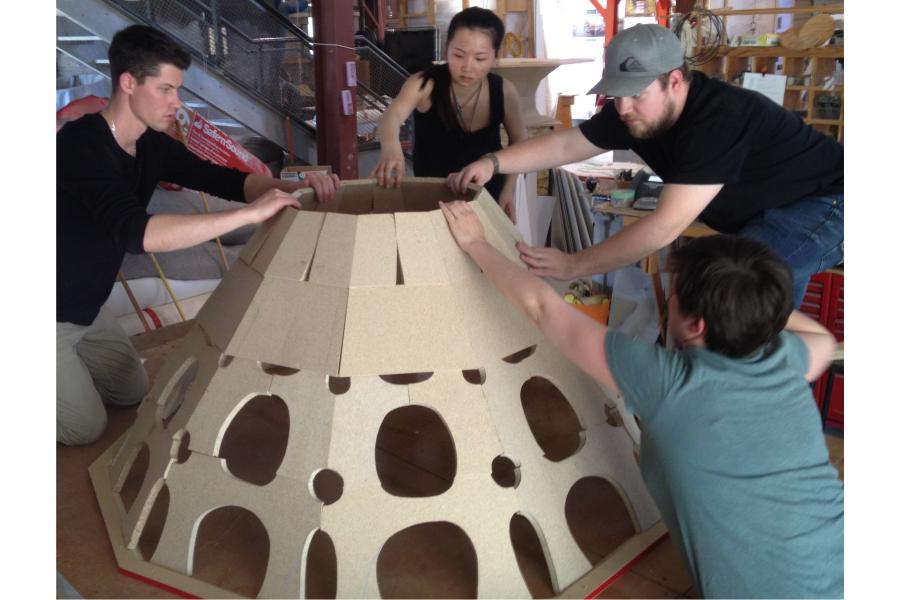
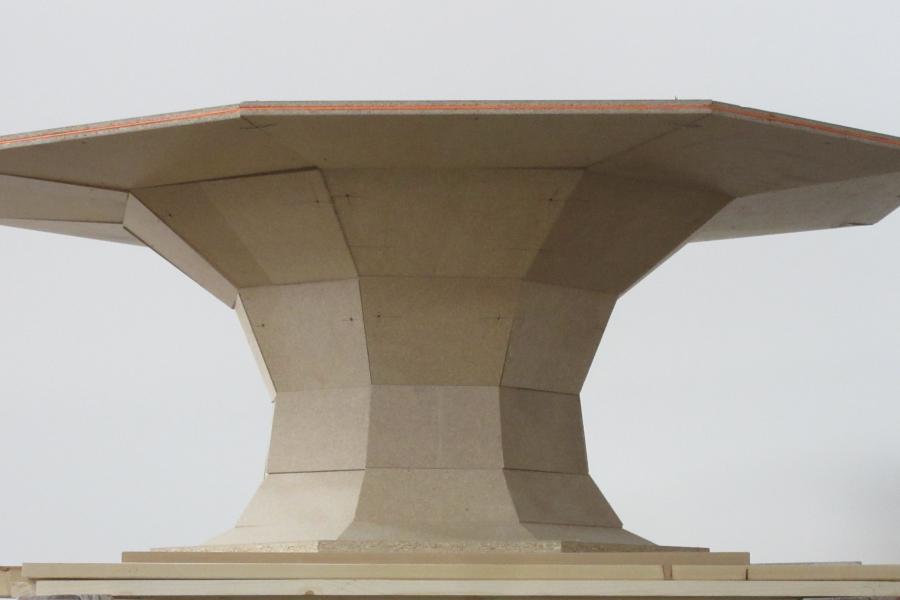
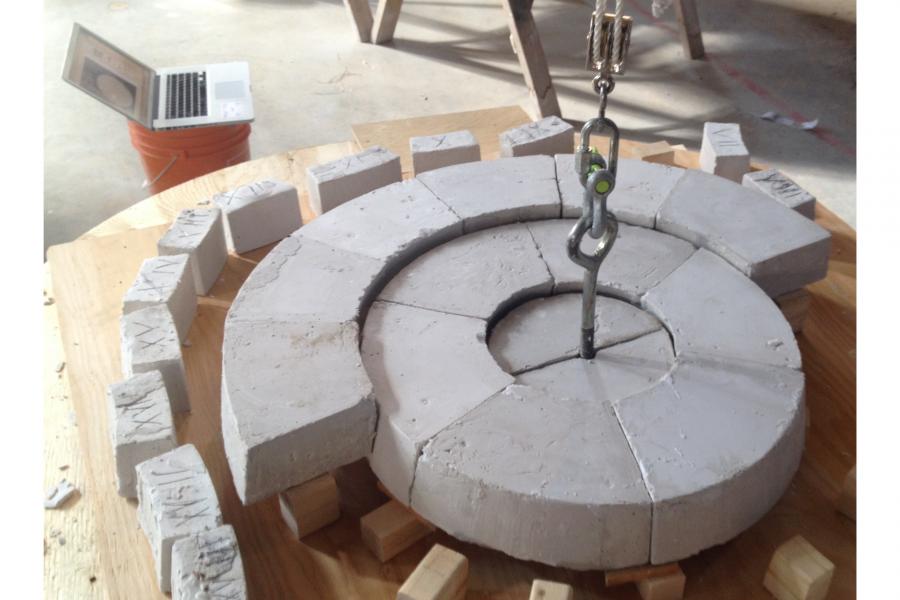
Emanuel Jannasch
Inklings that the received theory of domical structures was incomplete date back to Jannasch’s student days, and thought-experiments over the years seemed to confirm this suspicion. But his first physical demonstration and exploration of non-funicular domes did not take place until July of 2014, working with twelve students at Dalhousie University over an intensive two-week course. The results were presented at the 2016 International Conference of Structures and Architecture in Guimarães, Portugal, and published in the proceedings. An article in the Nexus Network Journal on Mathematics in Architecture came out in December; this began to place the technical aspects into historical and critical context. Some minor advances were made by two Dalhousie students in the fall of 2016 as part of a graduate elective in structural design. Jannasch had been invited by David Bowick of Blackwell Engineering to present my investigations to his colleagues, which he was able to do on his way to Manitoba in January 2017.
Response to the presentation – especially to the experience of manipulating physical models – showed that many of the principles being investigated were indeed counter-theoretical, not only to architects but among the highest caliber of engineer. Much work remained to be done, however, on several fronts. A significant portion was carried out at C.A.S.T. During this work, Jannasch and students discovered three structural forms that were entirely unexpected. Two were built; one remained unfinished at my departure. One of the built structures was expedited by a method of reciprocal casting that may constitute a fourth innovation. In checkerdomes, none of the courses alone provide the required hoop resistance. Each course consists of alternate blocks only, and compression hoops are only formed at latitudinal zones of overlap. During his work at C.A.S.T, Jannasch realized that another and more aptly named pseudome would comprise a bell surmounting a fan, with the two half-pseudomes sharing a single tension hoop.
Ice Bloom
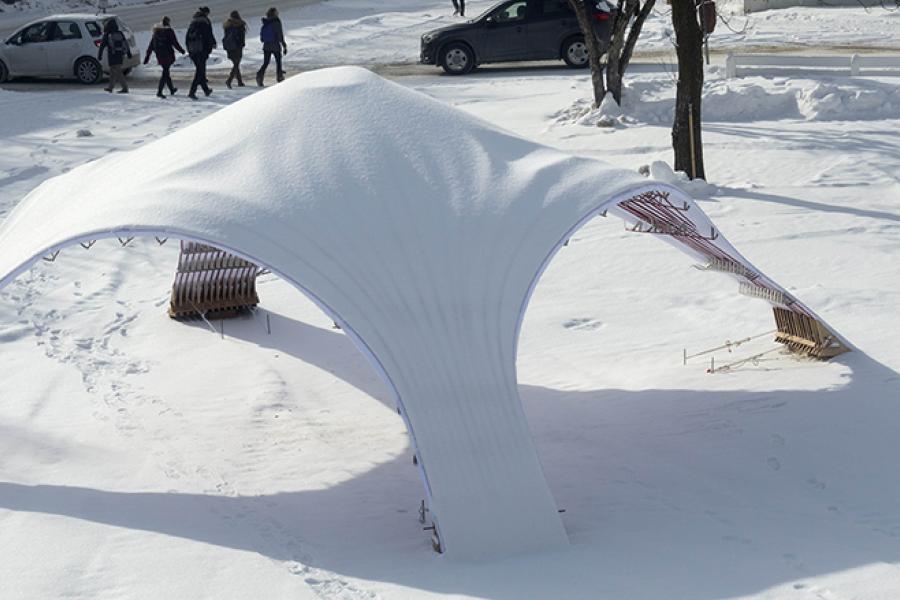
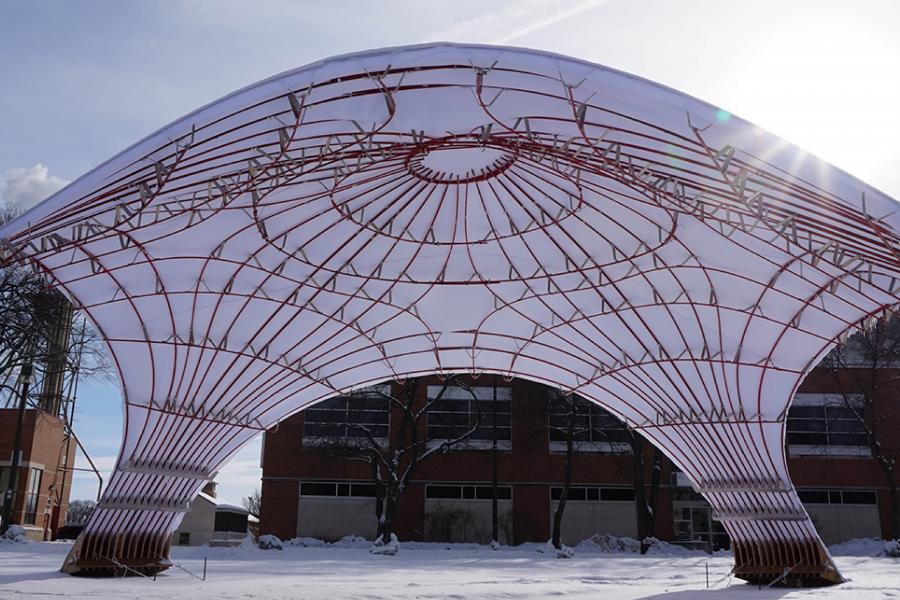
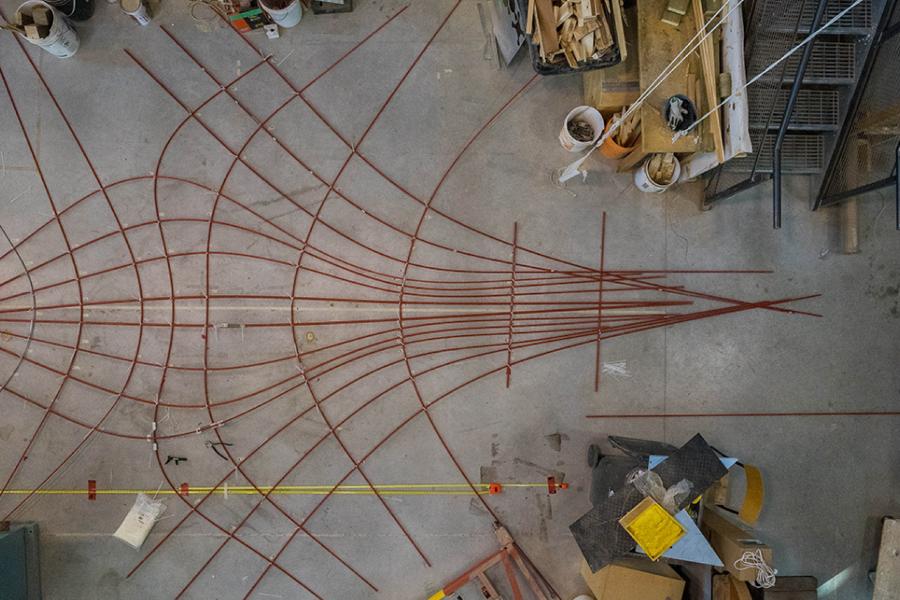
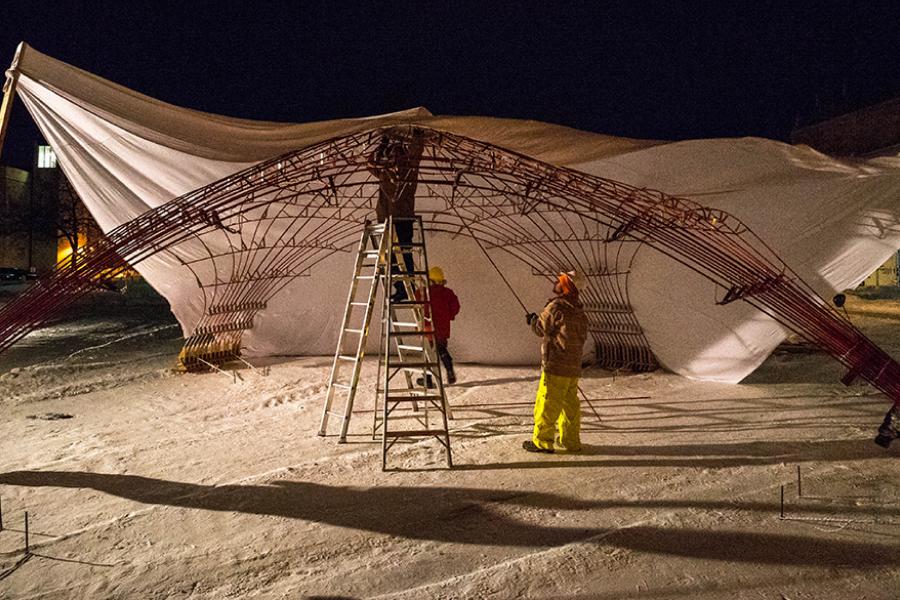
Lancelot Coar
Ice Bloom is a collaboration between Lancelot Coar (University of Manitoba), Michael Cox and Dr. Sigrid Adriaenssens (Princeton University), Dr. Lars De Laet (Vrije Universiteit Brussles), and Mark West, carried out at the Centre for Architectural Structures and Technology (C.A.S.T.) at the University of Manitoba. The project explores the ability of bending active structures, made in this case by fiberglass rebar, to produce an efficient structural frame for a fabric formed ice shell. The organizing pattern of the bars are guided by the principle stress lines of the structure, which help to shape the fabric formed ice shell in relation to those optimal stresses. The aim of this project is to expand a tectonic and methodological approach to developing structurally efficient, formally unique and buildable bending active frames and shell structures by working directly with force flow and material behaviour.
Project Partners:
Dr. Sigrid Adriaenssens, Princeton University
Michael Cox, Princeton University
Dr. Lars de Laet, AE Lab - Vrije University, Brussels
Mark West
Thank you to the Faculty of Architecture at the University of Manitoba and Princeton University SEAS senior thesis funding for financial support.
Fabrigami
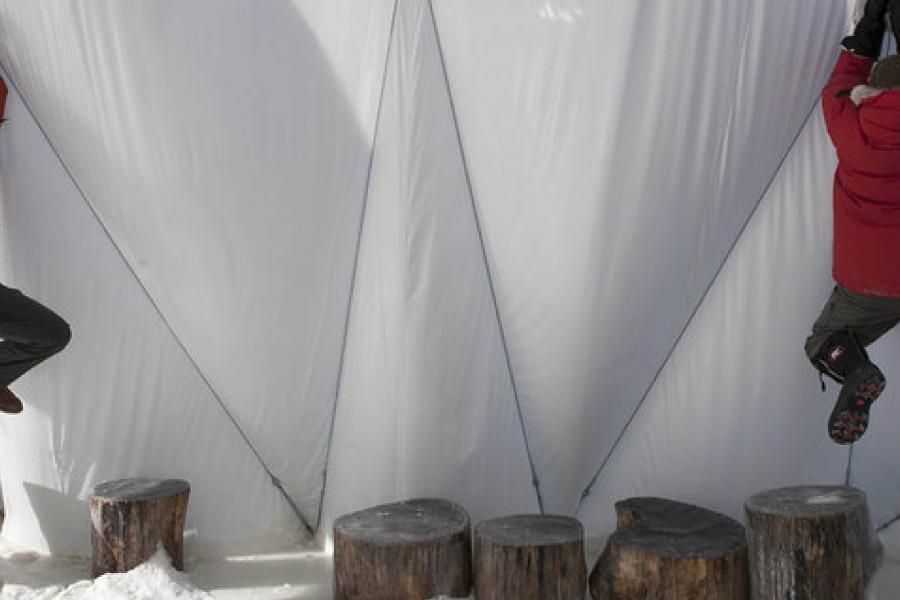
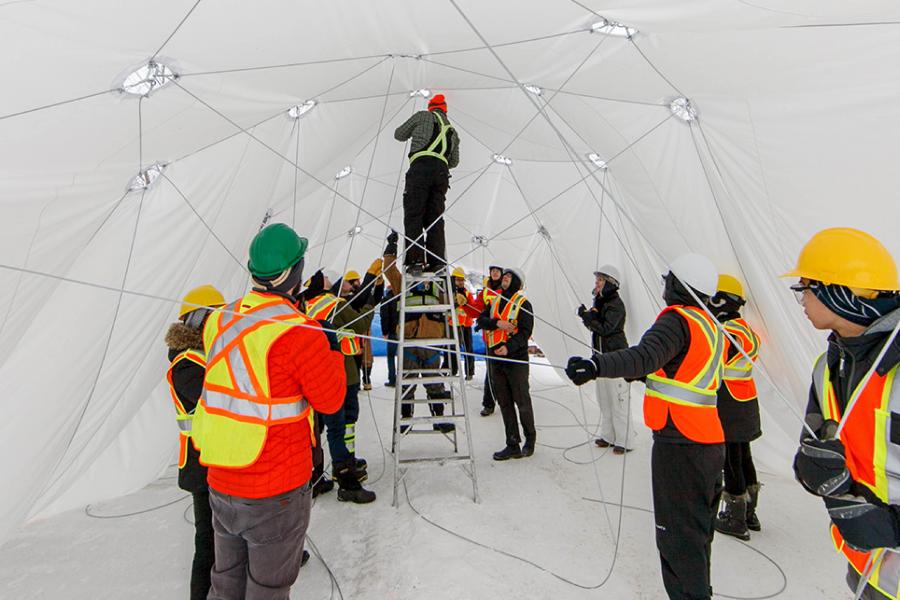
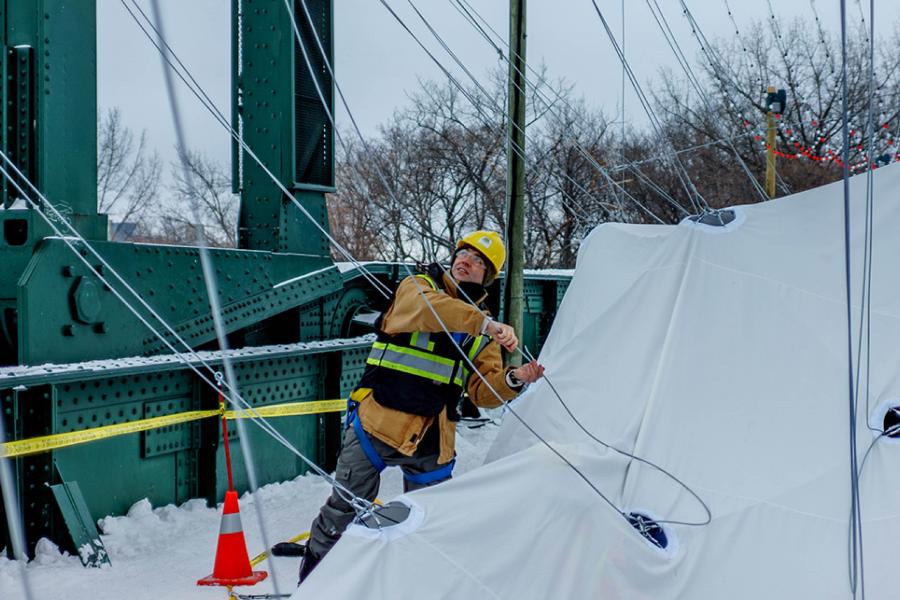
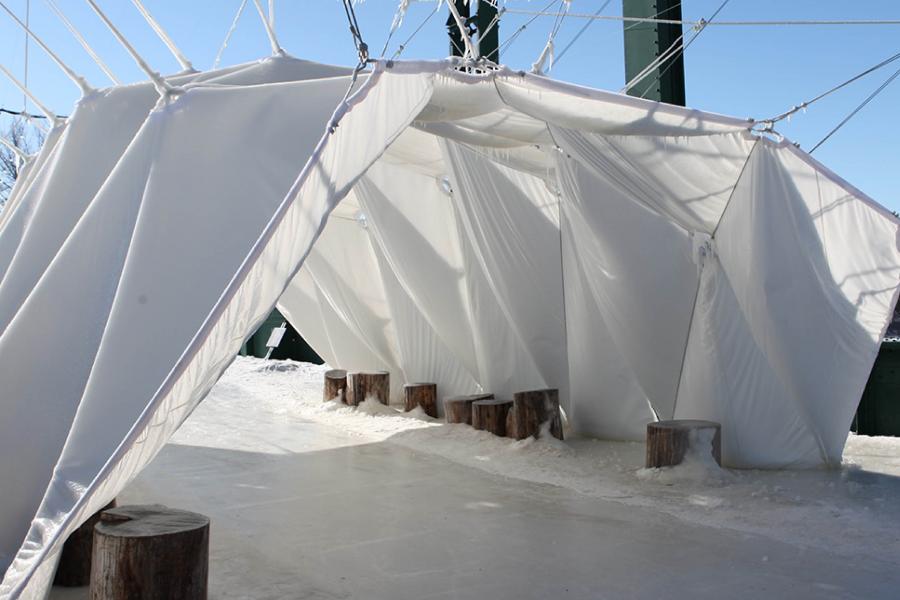
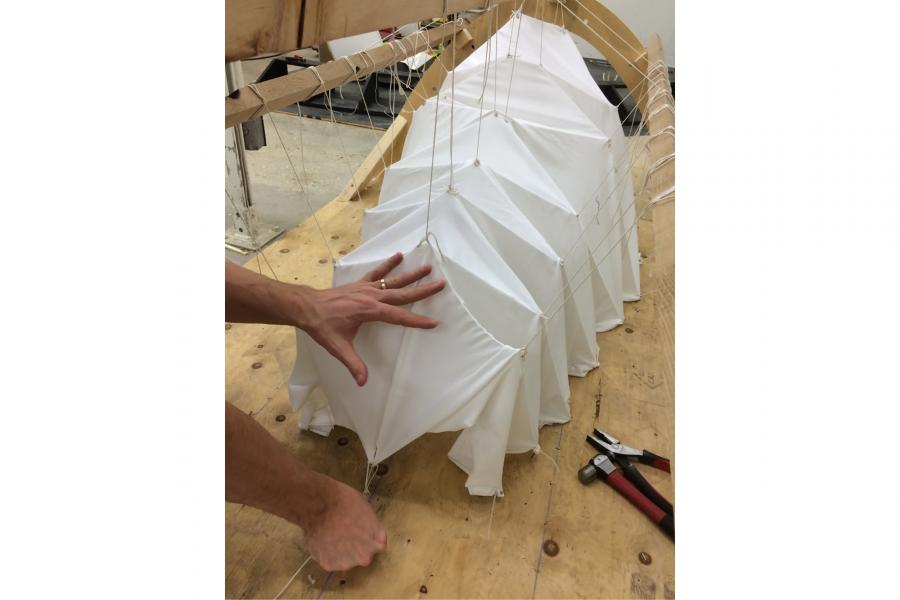
Lancelot Coar
Fabrigami is a project that seeks to exploit both the methods of origami forming, as well as the structural performance of origami geometries to create a folded fabric ice shell. This was achieved through the use of flexible and pliable construction materials (fabric and water) that was then rigidified (frozen) to arrive at the resulting form. Ice bloom was the official Warming Hut representing the Faculty of Architecture at the University of Manitoba at the Warming Hut Exhibition held at the Forks in Winnipeg. The project resulted in a free-standing fabric formed ice shell (0.6 - 3 cm thick) that supported 2,195 kg. of dead load, spanning 11.5m x 6.6m x 3.2m.
Project Partners:
Dr. Caitlin Mueller, the Digital Structures Lab - MIT
Dr. Lars de Laet, AE Lab - Vrije University, Brussels
Jason Hare - University of Manitoba
Kim Weise - University of Manitoba
Steven Oberlin - University of Manitoba
Thanks to the Fabrigami Student research team, 0812 Buildings, KGS Engineering, Macmor, The Forks, The Distillery, and Mitchell Fabrics
Cocoon
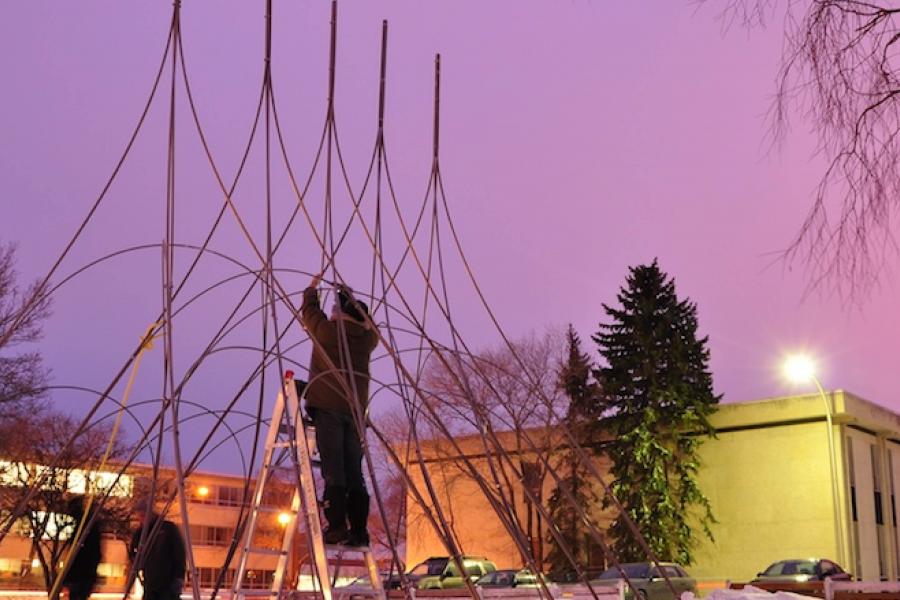
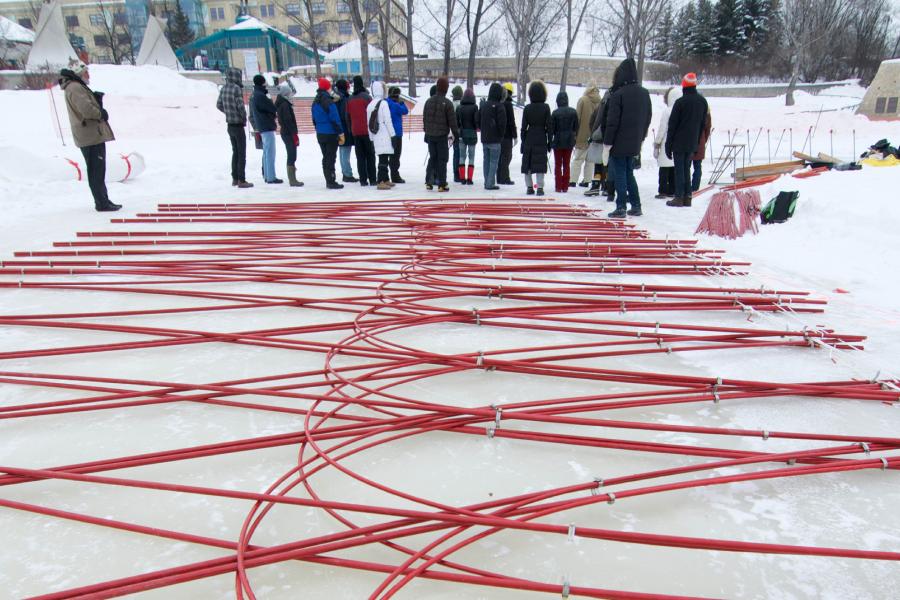
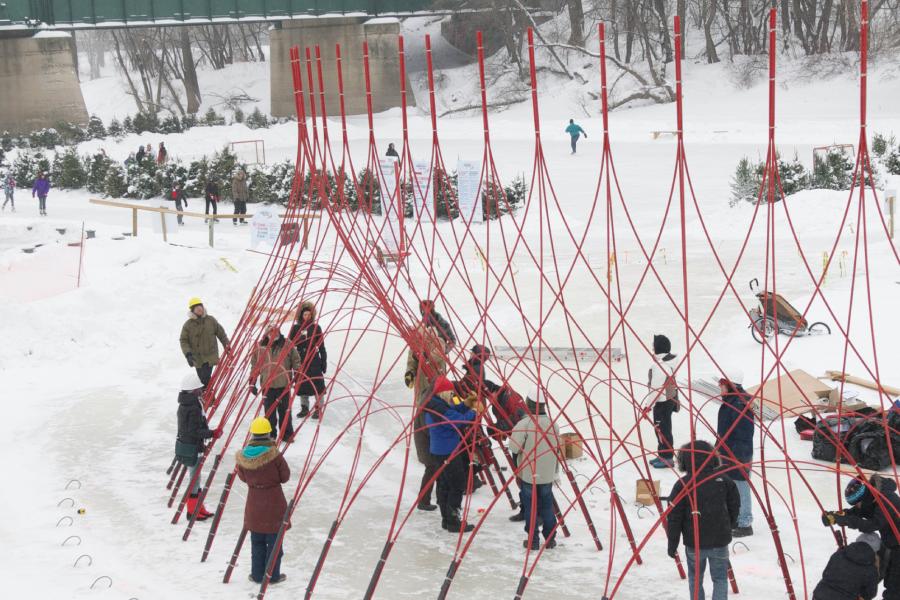
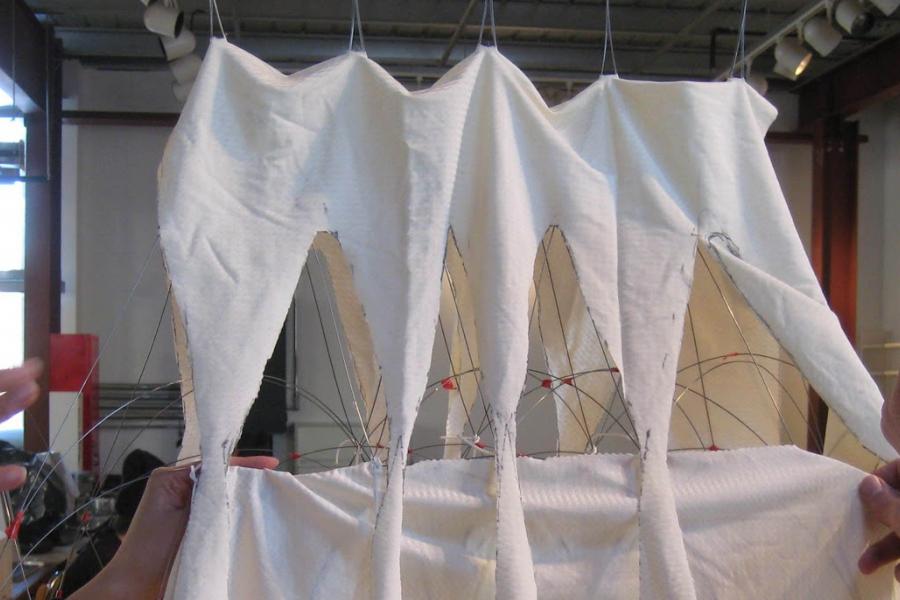
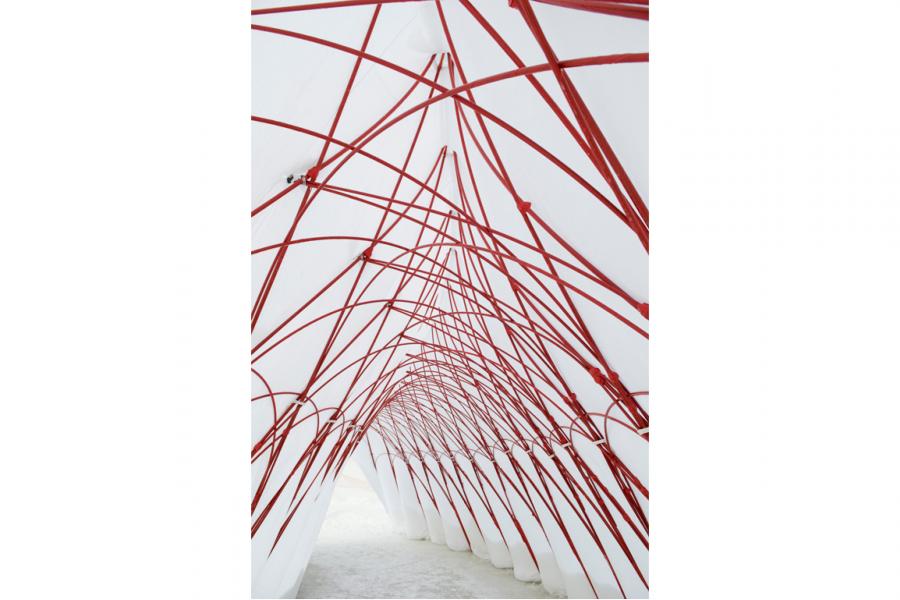
Lancelot Coar
Each year the frozen Red and Assiniboine Rivers in Winnipeg are host to the longest natural river trail in the world (8km). And on this trail, there is an international competition for the production of “Warming Huts” for the visiting ice skating tourists to engage with. In 2011 I led the first invited entry for the University of Manitoba for this project.
Focusing on the opportunities of the extreme climate, I sought to test the ability of my previous research of fiberglass to act a skeletal form work for a structural skin made from ice. Because the loads generated by the ice and wind of the site were significant, I collaborated with the department of Civil Engineering, to test the ultimate strength of the material in the design geometries I was proposing, and Z3rch Structural Engineers (Berlin) who modeled the behavior of the structure using a high-dynamic range modeling software.
The frames were pre-assembled in modules and erected on site. After the skeleton was rigidized through fixed connections, the fabric skin was applied, and its form was found through the influence of gravity and curated points of connection. Finally a hole was drilled into the ice and the river water was sprayed onto the fabric in layers, freezing to a thickness of 5mm. The ice became strong enough to support its own weight, and to influence the form of the fiberglass at the same time. The project was a study of combining self-forming properties in pure bending and pure compression in a free-standing structure.
Project Partners: The Faculty of Architecture , the Partners Program, the Department of Civil Engineering - University of Manitoba; Smith Carter, Z3rch Engineers, Pultral, Itty Bitty Baby, Marshalls Fabrics, Mathieu Leger, the many volunteers from the Faculty of Architecture.
Curtain Wall
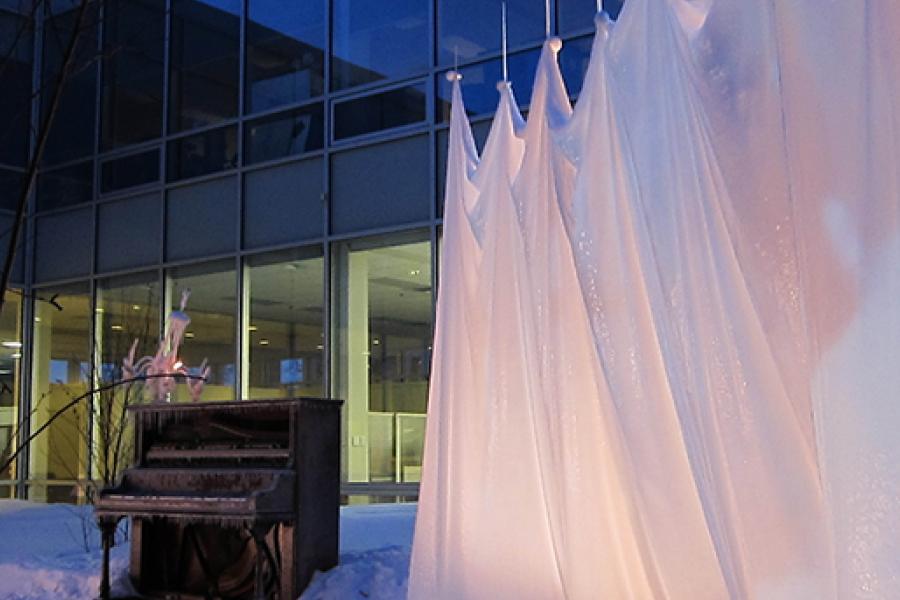
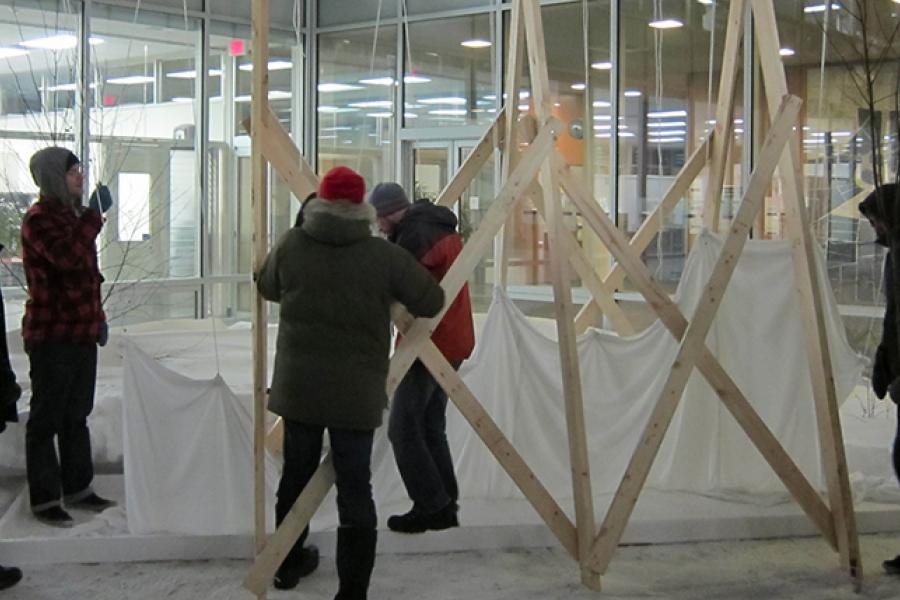
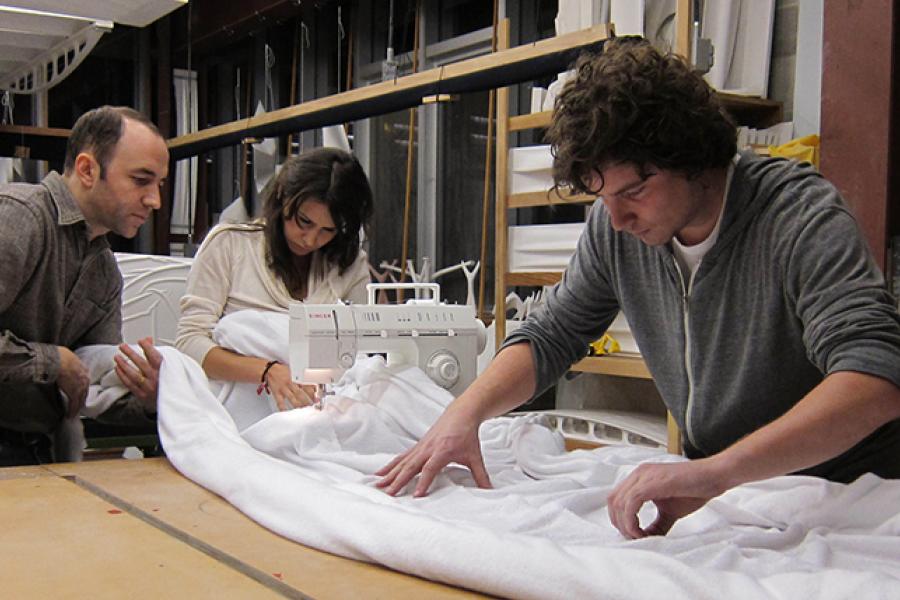
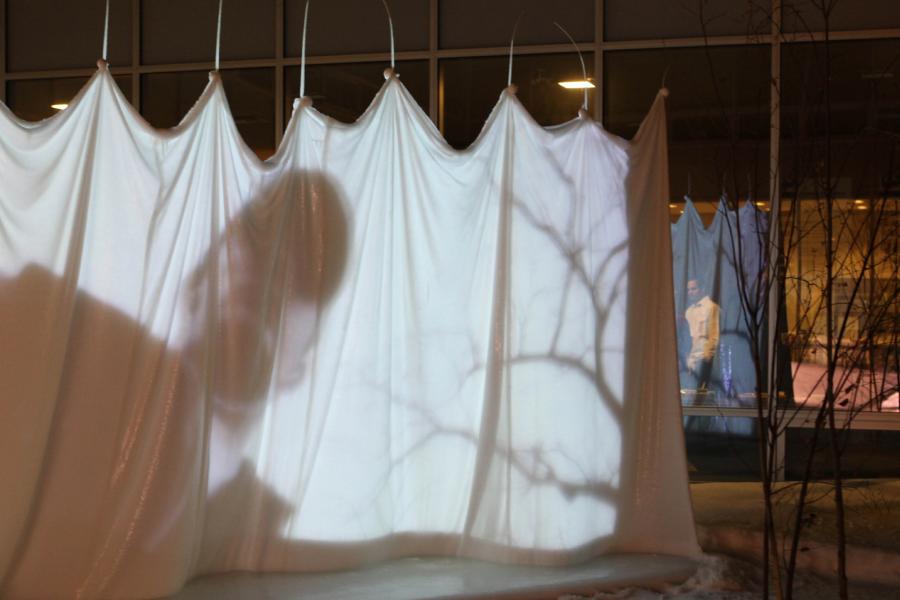
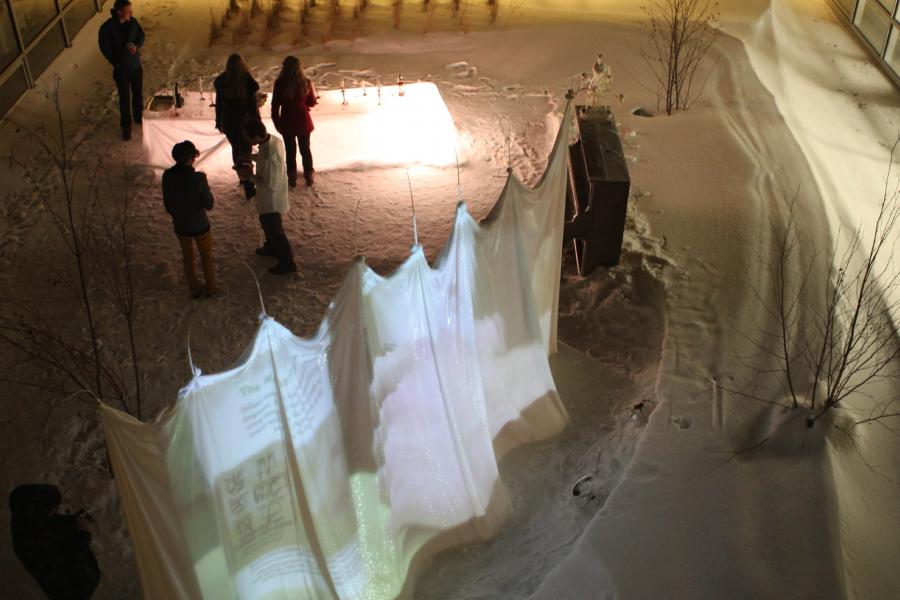
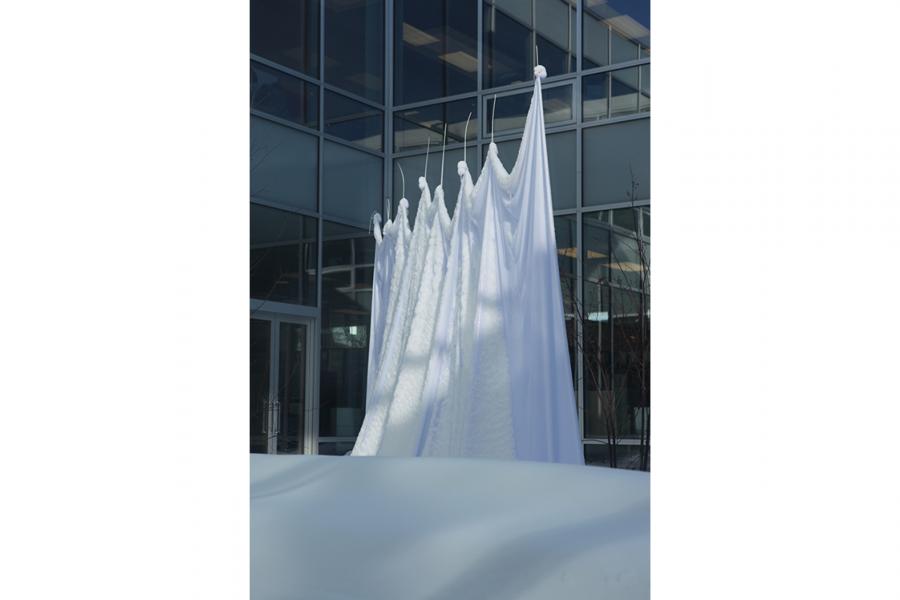
Lancelot Coar
This project provided an opportunity to explore the potential of ice to model the analogous liquid-to-solid material, concrete, at a full-scale without the challenges of mass and permanence.
A simple folded serpentine form was chosen at the base which acted to generate a stable base, and a single linear path was arranged at the top using wooden scaffolding and pulley points along the supported beam. The self-forming physical parametric behavior of the fabric resolved the difference between these two forms and created a strong shell of complex curves. Water was applied in frozen layers to a thickness of 3mm-8mm.
Once completed, the translucency allowed for the projection of images for the Atmosphere Conference at the University of Manitoba. The wall stood for 42 days/nights and collapsed only because of sublimation (the event of a solid evaporating without becoming a liquid), as the temperatures did not rise above freezing. The ice proved strong enough to support its own weight and to resist significant wind loading in the outdoor courtyard. This project opened a wide range of possibilities of working with analogous materials through complimentary design and construction processes.
Project partner: The Faculty of Architecture - The University of Manitoba
Warming Hut Build 2017
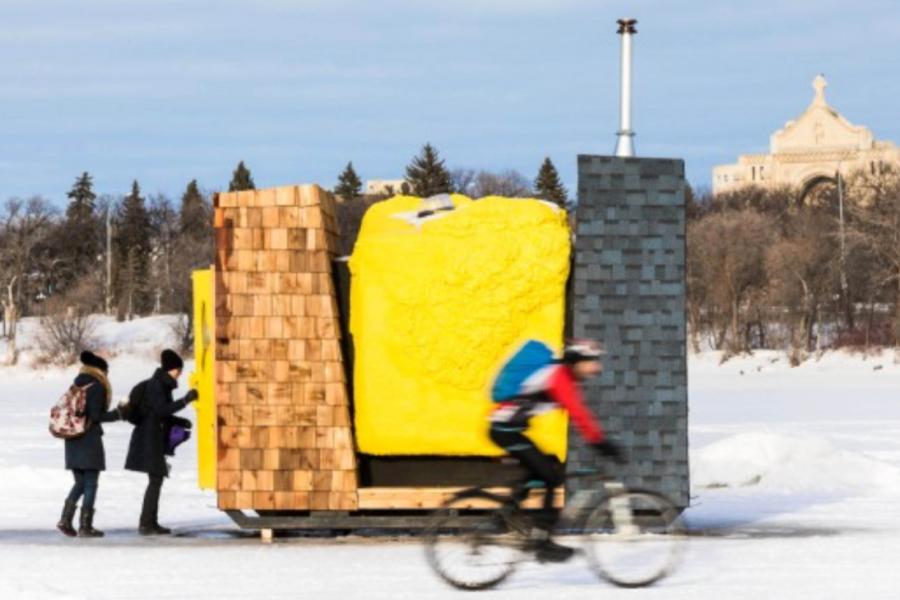
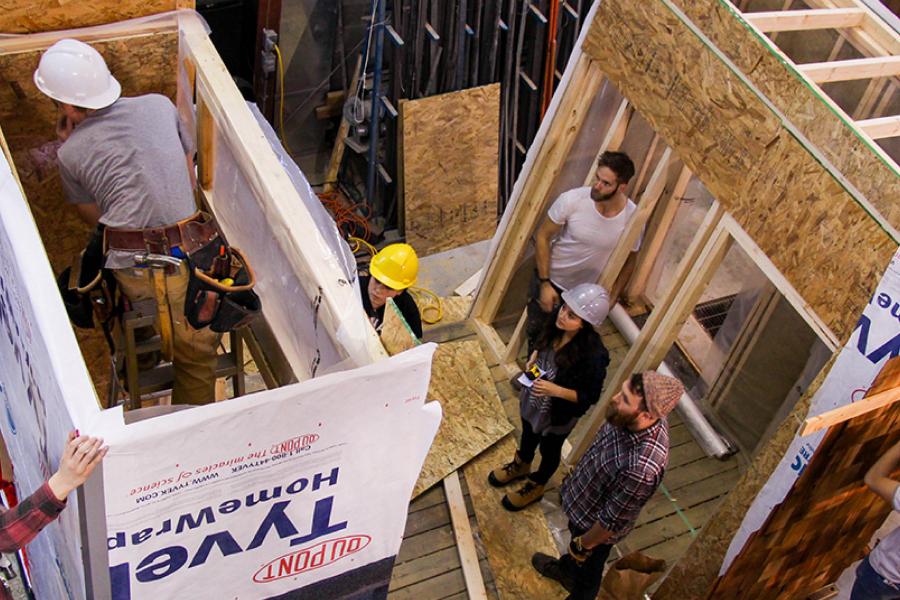
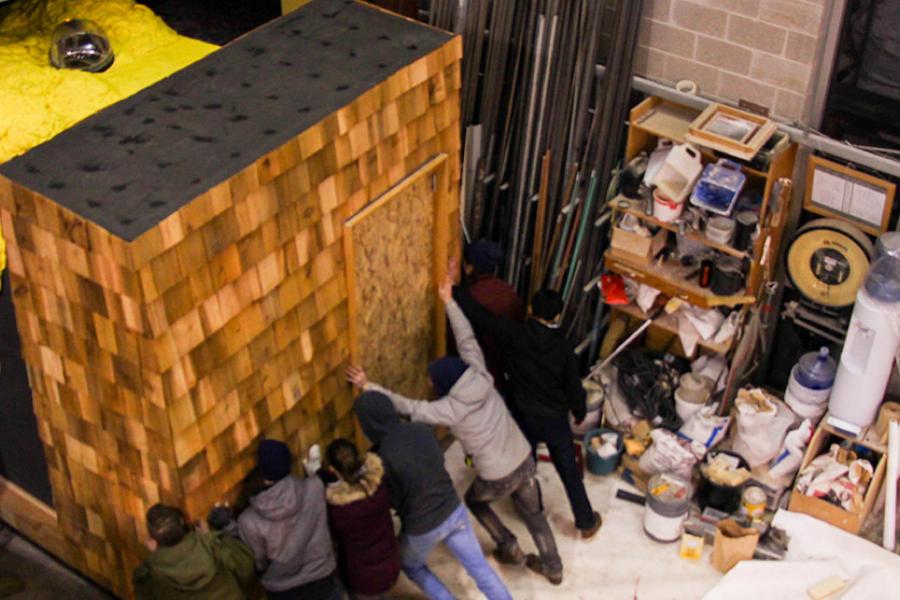
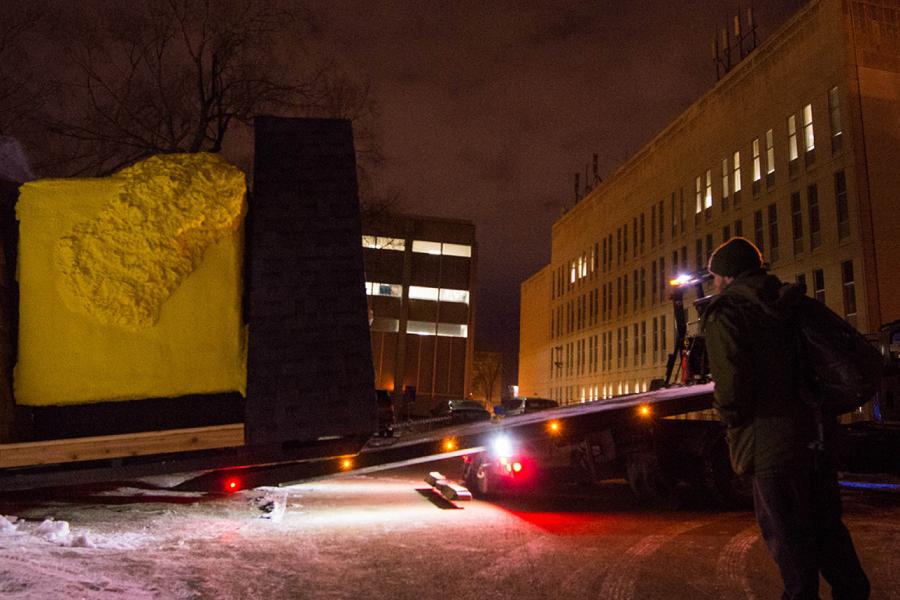
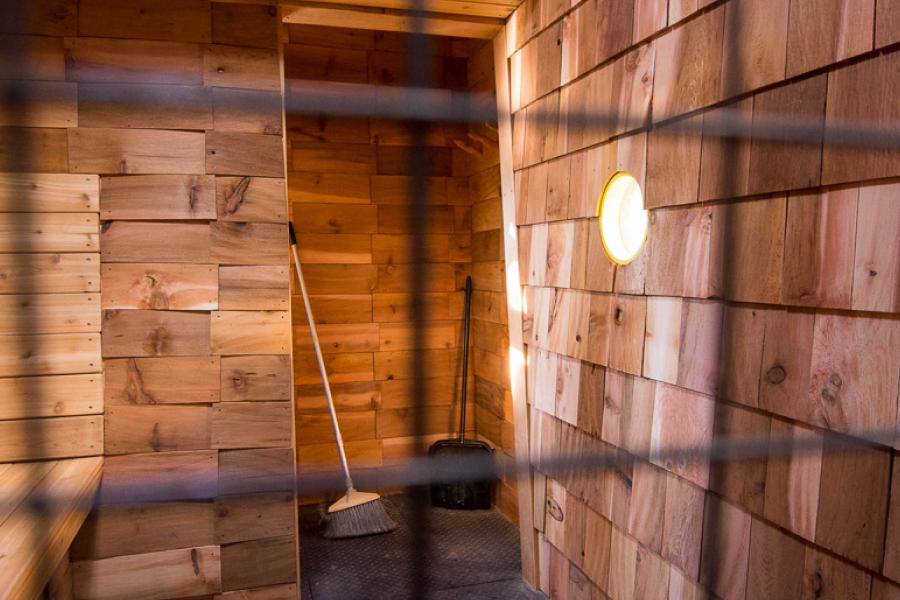
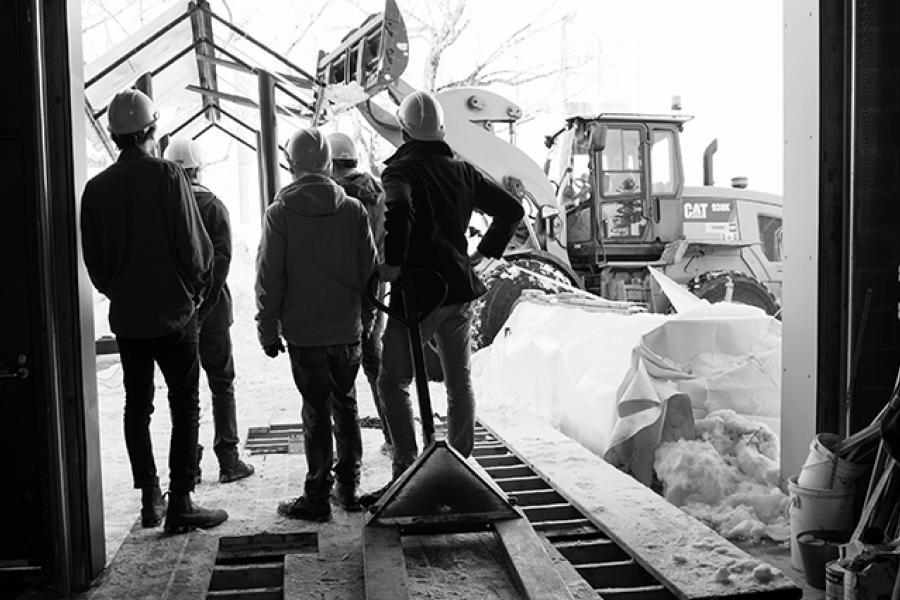
ED3 Architecture
(Extracted from Warming Huts website) Carbuncle is a proposal for the 2017 edition of the Warming Huts Festival, at the Forks, in Winnipeg, Manitoba. Four architecture studios, including 40 students from the Environmental Design and the Architecture Preparation programs, formed a team with their respective foundation instructors: Eduardo Aquino, Chad Connery, Terri Fuglem, and Liane Veness. Typically, the Warming Huts Festival proposals have explored an impressive array of imaginative possibilities, without, however, producing what essentially the festival proposes: a hut that is actually warm. The starting point was to conceive a truly warm hut, inspired by a sauna structure, a typology coherent with the Northern climates and Northern cultures. The inquiry explored technologic sustainable ways to advance an effective system to survive the cold weather of the frozen surface of a river of the harsh Northern winter. The design built process begun in C.A.S.T, with hand drafted and digital drawings, models and the built product taking place in the facilities. Carbuncle was built exclusively within the C.A.S.T facilities by the students and their instructors. The scale and scope of the project enabled students to learn and test construction technology, deepen critical design thinking and work in collaboration. After its completion in C.A.S.T, Carbuncle was brought on site to remain for the winter 2017 Warming Huts Art and Architecture festival.
Rainbow Gardens
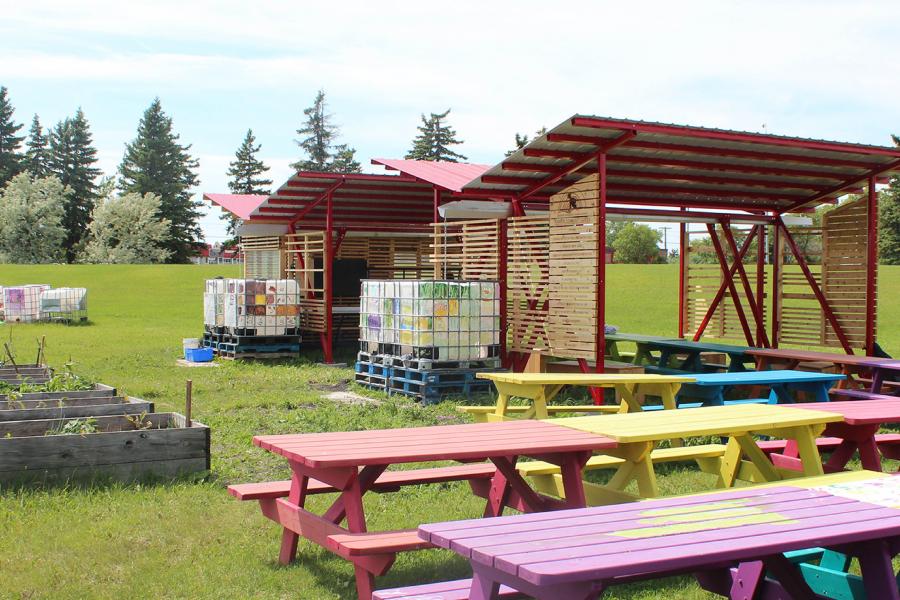
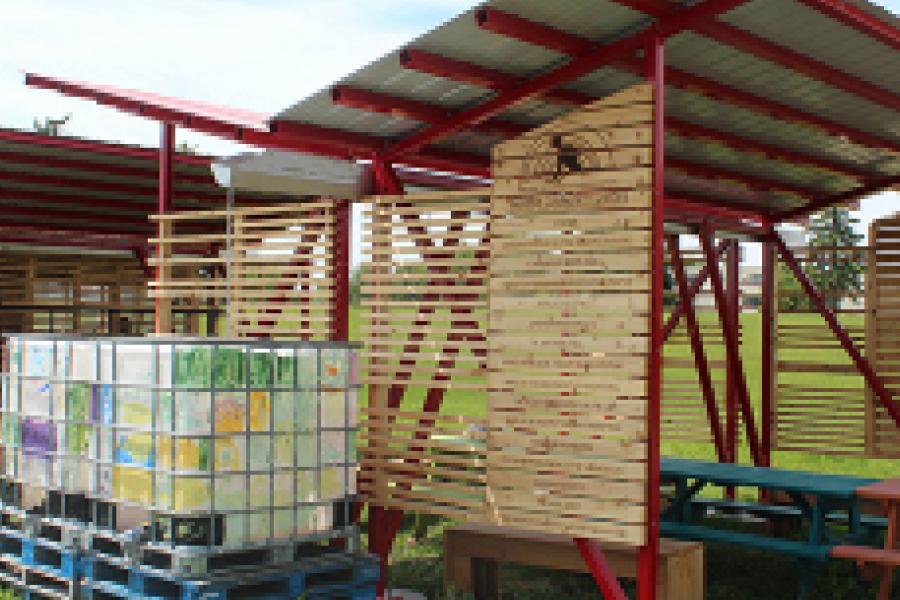
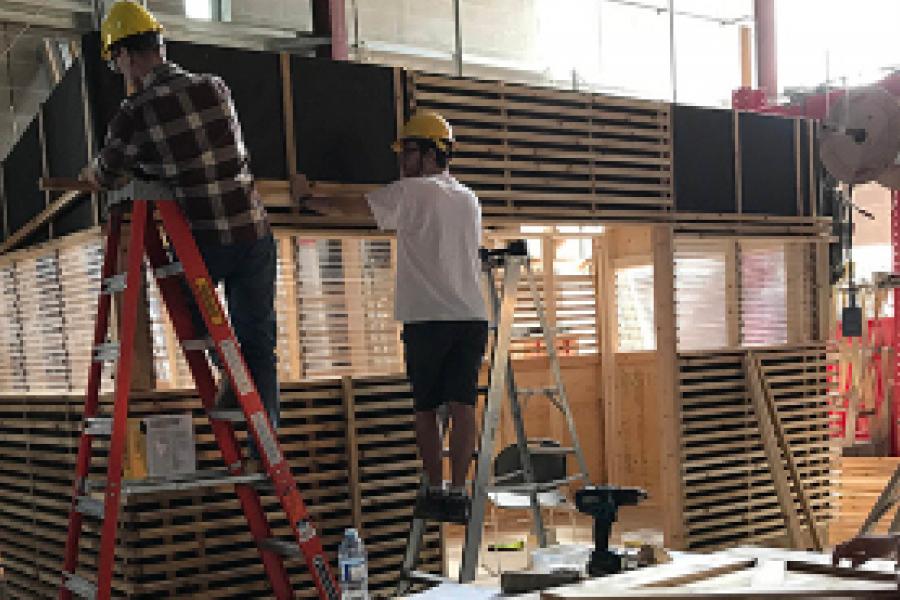
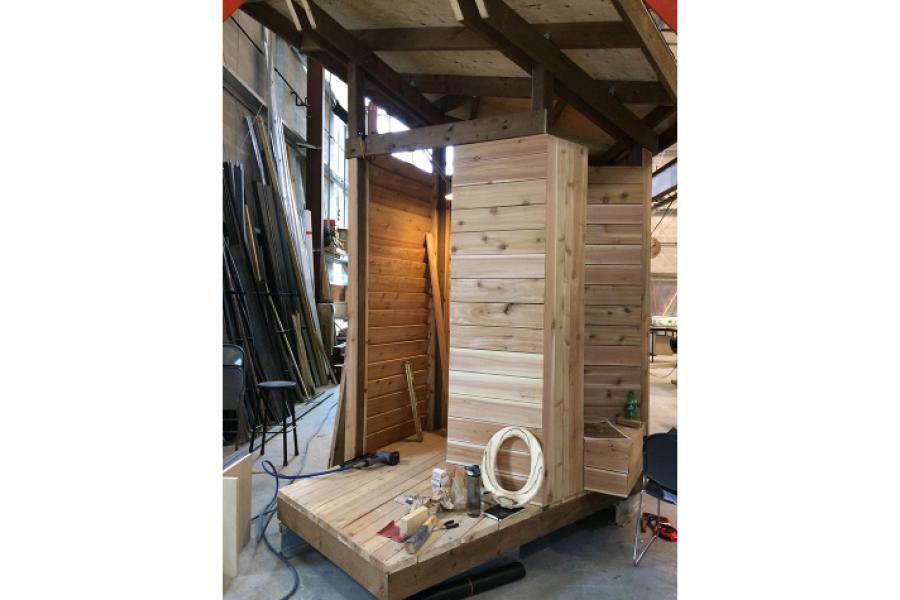
M1 studio
Rainbow gardens community design build project was an Independent Study course which presented an opportunity for students to work collaboratively on an intensive four-week participatory design/build studio. This course was centered around a participatory build and site installation of five independent small scale shade structures designed for a local Community Gardens, run by a not for profit Immigrant Integration & Farming Community Co-operative. The structures included a shelter for community event gathering, passive water catchment and retention systems, tool shed, a summer kitchen, a public compost toilet and remote structures to provide shaded rest areas, tool storage and water catchment within the gardens.
Altogether, the students participated in the coordination, preparation and installation of the concrete foundation work, design and construction of the steel and wood frame structures and all site and prep work. Construction of the structure took place in C.A.S.T, using the facility in the first stage of the course, and was assembled in the later half on site. The project was featured on UM Today and can be viewed through the following link:
https://news.umanitoba.ca/rainbow-gardens-supports-immigrant-families/
